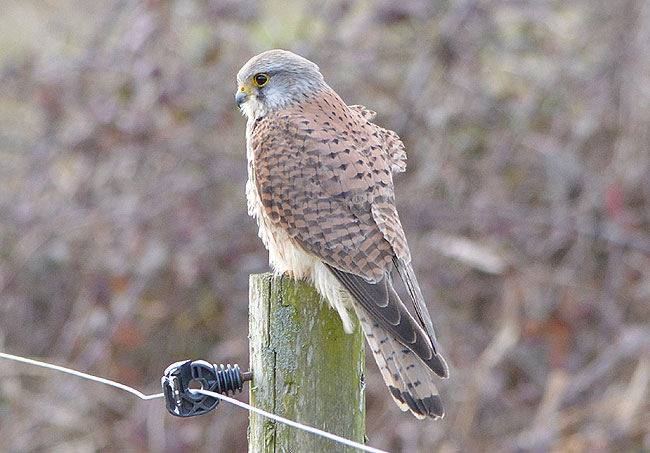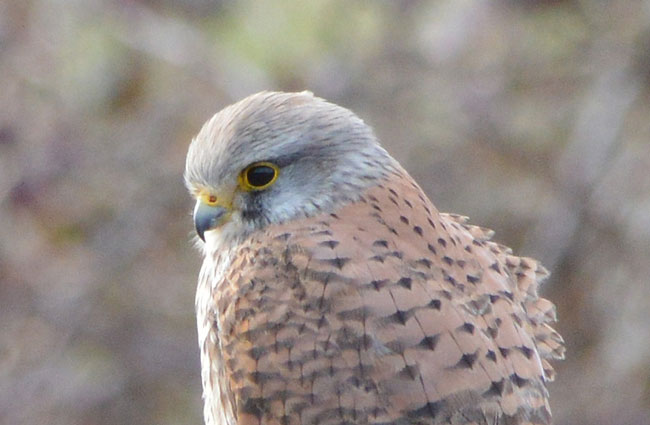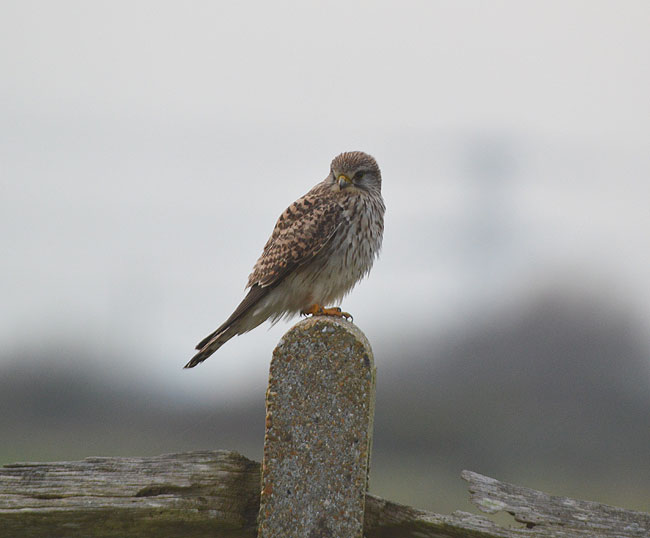Bird PhotographsA selection of personally taken photos of Birds in Kent & beyond |
|||||||
Bird Photographs - The Kestrel
A beautiful looking bird and a good Predator
Often the best place to see a Kestral is the most dangerous...through a car window as it hovers above the verges of Motorways and other roads.
After suffering population wise during the 1960's and 1970's building booms, they have now adapted better and can often be seen in Towns and Cities where they will, like they do on Trees, perch high up waiting for prey to appear below.

A windy day at Titchfield
The best (and safest!) place to see them is on open land, low flat marsh areas and Heath where their prey is easier to see. For this reason, you seldom see them in woodland or forests.

Close up of the first picture's female
I've seen many female Kestrals but as yet have not seen the Male which like so many creatures is a prettier and more colourful bird.
In silhoette they can be mistaken for a young Sparrowhawk, their size of up to 15" is similar. However, of all Predators, they are quite small.

On a fence post at Dungeness RSPB Reserve
They are said to favour being inland more through Winter but the Dungeness photo was taken late January and the Titchfield photo in early March, both typically coastal cold windy days!
Their diet consists of small mammals such as Mice, Voles and Shrews. They will also consider smaller and some Invertebrates birds as well.
Breeding takes place in April and May. Kestrels nest in any dry holes in sides of buildings, small 'caves' or trees, their clutch is usually up to 7 eggs.
All photos in the Photography Sections are taken with a Nikon D3200 using either a Nikkor 18-200mm or a Sigma 150-500mm Lens

of the Garden
Wildlife Subjects
_________________
_________________
_________________
The Down the Lane Web Site contains Cookies Read our Privacy & Cookie Policy here
Copyright © Richard Cannon 2001 - 2024 Down the Lane is now based in Bishop's Waltham, Hampshire, UK


